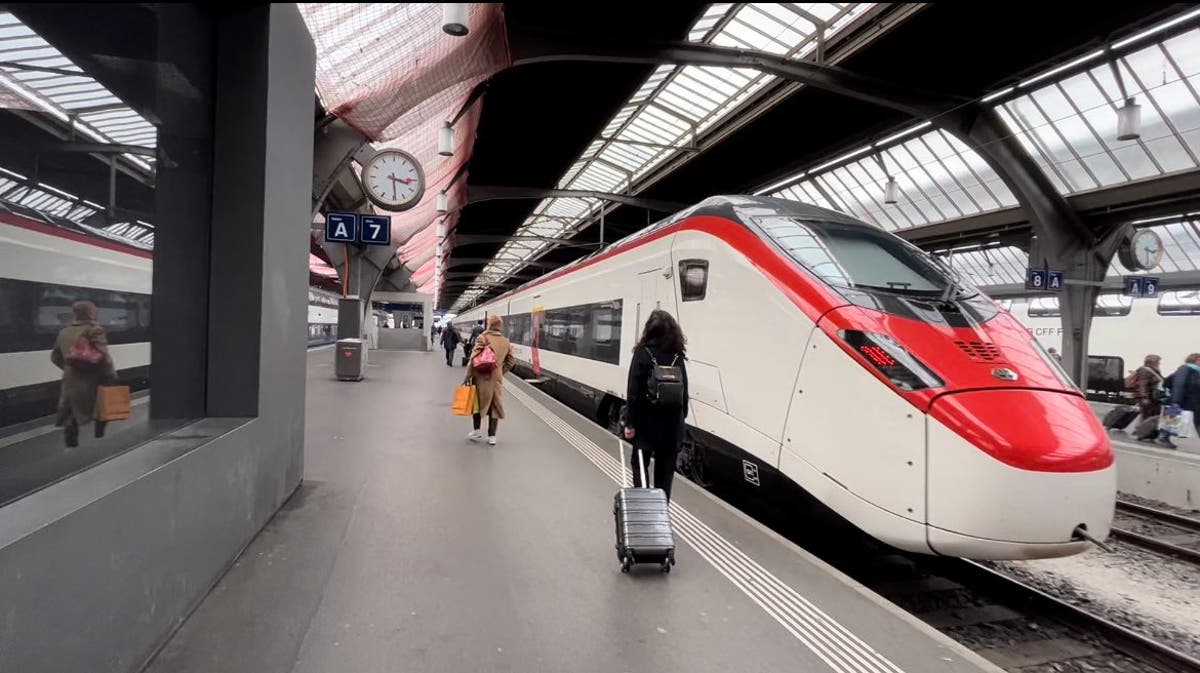A look at S’pore’s carbon-credit scheme for EVs and how it stands out from global efforts
Carbon trading is new to Singapore, but similar efforts have been ongoing elsewhere for some time. What can Singapore learn from them?

The new scheme, known as the Electric Vehicle Accelerator programme, would allow charging point operators to generate carbon credits based on greenhouse gas emission reductions.
The program calculates carbon credits based on comparisons between emissions generated by internal combustion engine (ICE) vehicles that would have been reduced with EV usage instead.
CRX CarbonBank estimates that for cars and taxis alone, the carbon credit scheme could bring in US$22.8 million (S$31 million), and cut nine million tons of carbon dioxide emissions by 2040.
The carbon credits can be bought by companies so that they can claim carbon neutrality, and proceeds from the sales can be used to further accelerate companies’ transition to EVs and construction of EV infrastructure.
Some companies have already begun signing up for the program, including ride-hailing company Gojek.
As a country that will be heavily impacted by climate change, Singapore has not simply been sitting on the sidelines when it comes to climate change initiatives.
Earlier this year, the government announced that it aims to achieve net zero emissions around 2050, and Singapore also participates in other multilateral efforts such as the Sino-Singapore Tianjin Eco-City.
However, since carbon trading is relatively new to Singapore, is it feasible and can we expect a huge difference with these new policies?
Understanding carbon trading
Emissions trading did not begin with carbon dioxide — instead, they began with concerns over sulphur pollution in the 1990s.
Since then, more comprehensive frameworks have been developed by international organisations and private corporations with a view towards reducing the emission of carbon dioxide and other greenhouse gases.
 Image Credit: Conservation in a Changing Climate
Image Credit: Conservation in a Changing ClimateFrom an economic standpoint, carbon trading makes sense. Parties that consume fossil fuels emit pollutants, but do not bear the full costs of these pollutants. After all, these pollutants are not kept localised, but are free to spread to other areas, causing acid rain, ozone depletion, and other damages.
The economic cost of repairing these damages is therefore not borne by the polluter, but collectively by everyone. Carbon trading works to internalise these costs, and make polluters take responsibility for their actions.
As such, carbon trading schemes increase the costs for polluters, scaling the cost with the amount of pollutants that they emit. Conversely, non-polluters do not pay for the costs of polluting, but instead receive compensation for their efforts to remain carbon neutral or carbon negative.
The unfulfilled promise of international cooperation
So far, carbon trading sounds perfect, at least in theory. Everyone is forced to take responsibility for their own pollutants, and those who actually invest in green technology and eco-friendly practices are rewarded for their efforts.
However, when put in practice, we need to consider if carbon trading can indeed be useful in Singapore. To analyse this, we take a look at where else it has been tried and whether they have been successful.
For starters, carbon trading has been tried in the European Union, United States, China, and Japan.
Larger projects have also been implemented on a global and regional scale, with the United Nations’ Clean Development Mechanism and International Emissions Trading being one of them.
Firstly, it’s important to note that international efforts on carbon emissions trading has not exactly seen the promised results. Rhodia, a chemical production company, was found to have double counted their carbon reductions, and made off with huge profits from the activity.
While carbon emissions have fallen in some countries, significant players within the international system have nonetheless avoided having to take responsibility for their carbon emissions, whether historic or present. The primary means through which climate change has been addressed internationally is through agreements on emissions targets and banning of certain emissions. The Kyoto Protocol, which commits countries to reduce greenhouse gas emissions, is not universally ratified, meaning that some countries have declined to commit to the reductions (Canada has also since withdrawn from the Kyoto Protocol).
![Participation in the Kyoto Protocol, where dark green indicates countries that have signed and ratified the treaty and yellow indicates states that have signed and hope to ratify the treaty. The United States have signed but, currently, decline to ratify it [48]. In the meantime, Australia has ratified the Kyoto treaty.](https://www.researchgate.net/profile/Sirma-Alparslan-Goek/publication/228641781/figure/fig4/AS:301955428700163@1449003192561/Participation-in-the-Kyoto-Protocol-where-dark-green-indicates-countries-that-have.png) Participation in the Kyoto Protocol / Image Credit: Sirma Zeynep Alparslan Gok via Researchgate
Participation in the Kyoto Protocol / Image Credit: Sirma Zeynep Alparslan Gok via Researchgate^ how does this graphic (kyoto treaty) link to what’s been discussed here? need to explain to better show relevance
At the same time, carbon emissions trading was not seen to fulfil its promise as a way to decarbonise economies and reduce emissions.
In fact, one of the largest regional projects, the European Union Emissions Trading System, was widely criticised for its failure to deliver results, and emissions actually rose while the scheme was in effect.
Recent successes
Recently, more local projects have seen some successes.
A study of China’s local carbon trading scheme has shown that even with minimal usage of the carbon trading system, the threat of penalties from excess carbon emissions incentivises all companies to reduce emissions.
Emission reductions are achieved through cutting energy consumption, reducing human and capital inputs, and innovating to use more efficient energy sources.
At the same time, output of these companies does not change significantly, which means that their revenues do not necessarily decline because of participation in the Emissions Trading Scheme.
Within the EU, carbon trading policies are also becoming increasingly effective, and carbon prices in Europe are at a historic high. The reasons for European success, however, are most likely different from the ones at play in China.
 Image Credit: Financial Times
Image Credit: Financial TimesEuropean policy is more nuanced, and aside from having the system in place, the EU also has complementary policies in order to close exploitable loopholes present in the system.
One such policy is the Carbon Border Adjustment Mechanism, which ensures that companies cannot simply shift production to less regulated jurisdictions, and sell products in highly regulated jurisdictions.
Lessons for Singapore
What could be accounting for this difference in results? Perhaps, one answer is governance.
International organisations are only as powerful as their constituent states allow them to be. When it comes to independent governments, they have the ability to enforce policy as they see fit.
With regards to climate change and carbon emission reduction, the past decade has seen greater attention and urgency being accorded to carbon neutrality.
However, carbon trading is still far from perfect. Emissions trading systems still suffer from issues such as difficulty in verification, concentration of carbon emissions, among others. Fortunately for Singapore, the failures of other systems can be learnt.
Singapore can learn a good deal from the carbon trading policies in other countries, and given the importance of mitigating climate change to Singapore, these lessons are urgently needed.
Firstly, carbon trading solutions should begin on a small scale among entities that the government can effectively punish and reward. Larger scale solutions require greater cooperation, and schemes that are unenforceable do not actually help.
In this, the policy in place in Singapore can be said to have been well-designed. The policy, for now, affects companies with large vehicle fleets, and expansion plans are modest.
Additionally, carbon trading policies by themselves may not always be sufficient — there should be complementary policies in place to close loopholes. This might be especially poignant for Singapore.
As one of the more developed nations in Southeast Asia, our calls for climate change action may often go unheeded, as neighbouring states prioritise economic development.
 Image Credit: The ASEAN Post
Image Credit: The ASEAN PostThe lessons from the Chinese policy can be applied — since participation in emissions trading schemes do not necessarily mean a reduction in output, there might be some common ground to be found for international cooperation, though it might not be as soon as we hope.
Furthermore, Singapore’s first foray into carbon trading is intended to start small, beginning with EVs. This may make international cooperation on the issue more palatable for other governments.
There are already policies in place to encourage EV acceleration, and the plan is for Singapore to phase out ICE vehicles by 2040. This may serve as a springboard for regional cooperation, especially with Malaysia. In fact, there is already a cross-border EV charging service in operation. Such companies would benefit from joining the EV acceleration program, and other companies that operate across multiple jurisdictions could serve as a valuable bridge to foster further bilateral or multilateral efforts, beginning with regulation. (not sure if we should cite this as an example cus the city gas rollout is not a governmental collaboration)
A final lesson that might be important to note is that many of these systems took a significant amount of time to develop, and mature into effective methods of controlling carbon emissions.
Europe’s attempts to make carbon trading work have been in place since 2005, but have only begun to show results recently. Chinese attempts have also been underway ever since the Kyoto Protocol of 1997, and their system has since undergone several major revisions. It would be prudent for Singapore to also expect a similar lag time before improvements are seen.
Singapore has a unique combination of startups, technological know-how, and the motives to promote climate change action in the region. The EV Acceleration Program marks the first step towards greater regional climate change initiatives.
While ASEAN may not have the bureaucratic ability to enforce such policies as of yet, one can hope that Singapore’s expertise in this area as well can accelerate the process and transition — not just Singapore, but the entire region as well — towards carbon neutrality.
Featured Image Credit: South China Morning Post

 ShanonG
ShanonG 
































